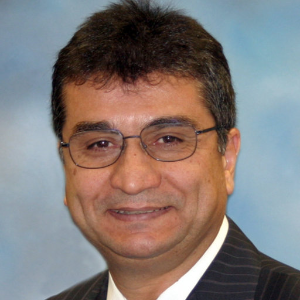Title : Clinical significance and global burden of antibiotic resistance
Abstract:
Antibiotic resistance (AR) is both clinical and global public health concerns. In numerous countries, physicians have very few other options available to treat MDR and XDR infections. The World Health Organization (WHO) acknowledges AR is one of the top global public health and development threats. Indeed, AR is a leading cause of mortality worldwide, with the highest burdens in resource limited countries. Understanding the depth of global AR impact can help identify the current gaps and mitigate measures to control its spread. It’s been estimated 12 major infectious syndromes, 23 bacterial pathogens and 18 antibiotic regimens (targeted and empirical) currently contribute to the global AR. Prior to COVID-19 pandemic (2019), it’s been reported six additional pathogen-antibiotic combinations each was responsible for nearly 100,000 AR-attributable deaths primarily due to third-generation cephalosporin-resistant E coli, carbapenem-resistant A baumannii, fluoroquinolone-resistant E coli, carbapenem-resistant K pneumoniae, and third-generation cephalosporin-resistant K pneumoniae. Based upon numerous recent studies, nosocomial MDR K. pneumoniae isolates has been recorded from 28 countries in six regions of the world. For example, one study reported the estimates of ESBLproducing K. pneumoniae in Ethiopia were 61.8% and the pooled proportion estimates of MDR isolates for both K. pneumoniae and E. coli were 82.7%. China is another concern due to overuse and abuse of last-resort antibiotics in human medicine, veterinary medicine, and animal husbandry. Currently, there is a prevalence of gram-negative bacteria multidrug resistance in China such as CRAB, carbapenem-resistant P. aeruginosa (CRPA), and CRE. A. baumannii has a higher carbapenem resistance rate than P. aeruginosa and Enterobacter spp. with a proportion of more than 50% among Chinese isolates. The rates of resistance to imipenem and meropenem differ by region in China with Henan Province recorded as highest (78.5%) and Hubei Province recorded as lowest (64.1%). Nosocomial AR in Iran deserved global attention. In a recent study conducted in the southwestern region of the country, the investigators concluded “Considering widespread empirical antibiotic therapy in Iran, the rate of increasing resistance to common antibiotics prescribed for ambulatory and hospitalized patients is concerning.” Most commonly antibiotic resistance was seen with cephalexin (100%), cefotaxime (100%), cefazolin (100%), amoxicillin (80%), and all cases of oxacillin were resistant. Vancomycin resistance was higher than 50% in this study. The authors have also reported a widespread resistance for azithromycin (94.4%) and erythromycin (63.6%) in Yasuj metropolitan area which is alarming. To address rapid spread of AR in human and animal communities and their environmental impacts, efforts must be focused on educations healthcare professional for making appropriate therapeutic decisions, improving surveillance and laboratory infrastructure particularly molecular epidemiological methods and genetic analysis of resistant pathogens as an urgent priority to combat global AR. In the meantime, the current clinical protocol vis-à-vis principles of antimicrobial stewardship adherence is a practical approach for minimizing the incidence of AR in outpatient and inpatient settings.



